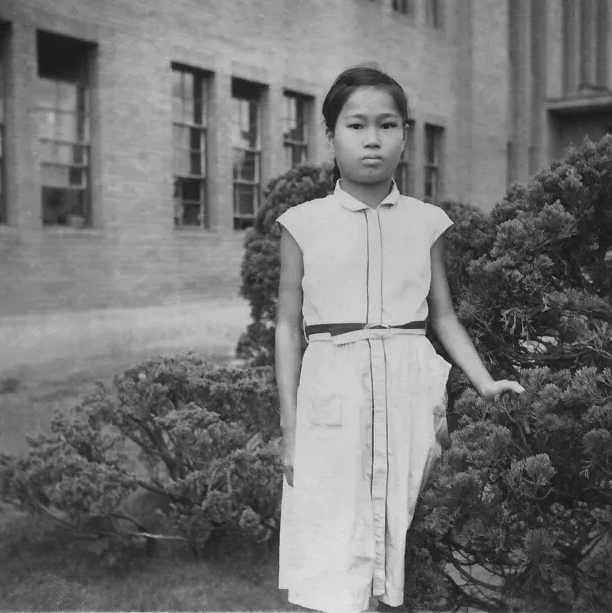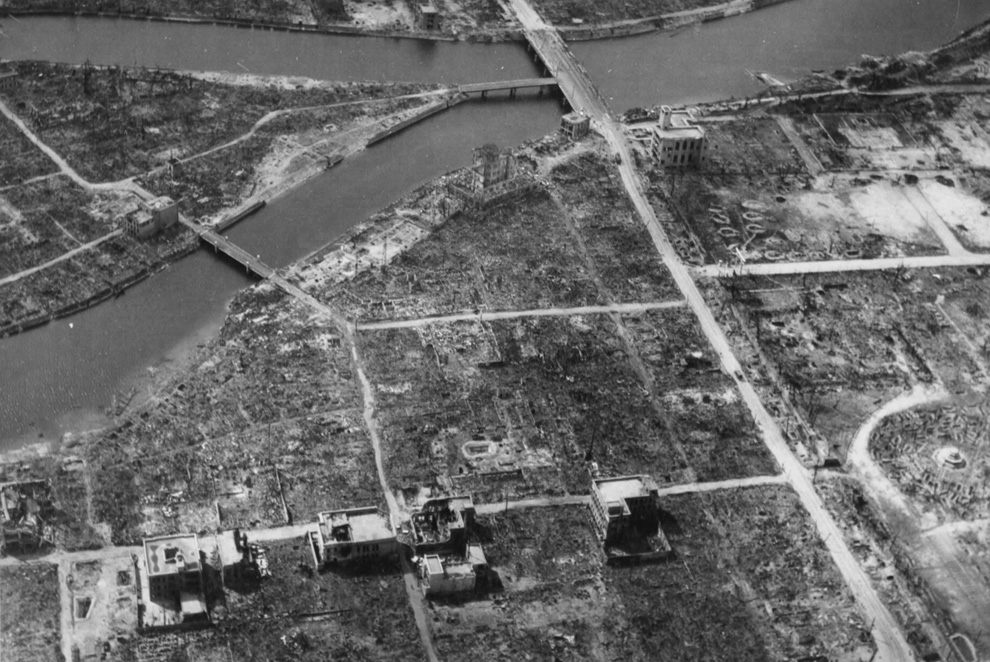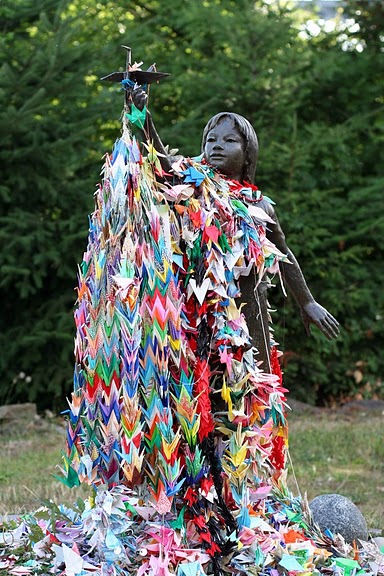Study Guide: Sadako Sasaki

Sakako’s Story
Sadako Sasaki was two years old on August 6th, 1945 when United States bombed her home, the city of Hiroshima, Japan. This attack was unlike the many other B-29 bombers that had created deadly firestorms in Japanese cities by dropping incendiary bombs designed to create huge firestorms. This time, by order of President Truman who claimed to be targeting the Japanese military, the United States dropped one of the most powerful bombs ever created onlto the 350,000 people living in the city of Hiroshima.
The story of Sadako Sasaki, a young girl who lived through the bombing of Hiroshima, and eventually died from leukemia as a result, is one of thousands of similar stories from Hiroshima. Yet, Sadako’s story still resonates as well it should.
Sadako’s family lived about a mile from the bomb’s hypocenter (point of impact). When the bomb exploded, a blinding white light flashed through the city at the speed of light, and a deafening boom was heard miles away. Massive fires immediately broke out throughout the city and radioactive black rain fell from the sky.
Running for their lives, Sadako, with her mother and brother managed to escape the fires. However, Sadako’s grandmother turned back to retrieve some family heirlooms, and was never seen again. Sadako’s father, Shigeo, was out of town when the bomb fell. He made his way back, found his family, and they slowly began rebuild their lives.
Like many living in Hiroshima following World War II, the Sasaki family struggled with military occupation, sickness, povery, starvation, and a very uncertain future. They mourned the loss of their grandmother, many friends and neighbors, their once beautiful city, and their home.
The Sasaki family would soon also grieve for Sadako, who became sick with leukemia, called “atomic bomb disease” by survivors.
By all appearances, Sadako was a happy and healthy child up to this point. She was known to be a fast runner and was popular among her classmates. That is why it came as such a surprise when at the age of twelve, Sadako needed to be admitted into the hospital. While there, she remained optimistic and resilient. Even though she was sick, she continued to bring happiness and cheer to her family and friends.
Sadako was also happy the day volunteers gave her and other children in the hospital origami cranes. Soon after, Sadako’s father visited her. She asked him, “Why did they give us origami cranes?”
Shigeo told her the Japanese Legend of the Crane. Japanese folklore tells of cranes that can live for a thousand years, and a person who folds an origami crane for each year of a crane’s life will have their wish granted. The story inspired Sadako. She decided to fold one thousand origami cranes. She filled her room with hundreds of cranes of many different colors and sizes. After folding her thousandth crane, she made her wish to be well again.
Sadly, Sadako’s wish did not come true. She remained ill, but still did not lose faith. She began folding more cranes in hopes that her father’s financial debts would be forgiven. Up to her dying moment, she continued to fold cranes whenever she could, some as small as a grain of rice. Still only 12 years old, and surrounded by her family and 1,300 origami cranes, Sadako passed away.
When Sadako first realized how sick she was she had many concerns and questions. She worried for her family, and if people would remember her. Sadako always knew that she might not live long. She asked herself, “How can I make the world a better place while I’m still alive?” She set a goal of leaving the world a more peaceful place than it was when she arrived.
At her death, Sadako could not know the impact she would have on the world. Her resilient spirit and origami cranes inspired her friends and classmates to raise money for a monument for her and all the other children who died as a result of the atomic bombing.
Since 1958, many thousands have visited the statue of Sadako in Hiroshima Peace Memorial Park, where Sadako still lifts a large paper crane overhead. Inscribed at the foot of Sadako’s statue is a plaque that reads:
This is our cry. This is our prayer. Peace in the world.
The Story of Sadako and the Thousand Cranes (5:01)
The Girl Who Became Hiroshima’s Icon for Peace (7:50)
Sadako and the Thousand Cranes (5:03)
How to Make an Origami Crane (8:06)
The Satisfying Math of Origami (5:22)
Books about Sadako
- Sadako and the Thousand Paper Cranes, by Eleanor Coerr, Ronald Himler. 80 pages, for ages 8 – 12.
- Sadako, by Eleanor Coerr. 48 pages, for ages 4 –8
- Children of the Paper Crane, by Masamoto Nasu. 232 pages, for teens and adults
More Information
- http://www.pcf.city.hiroshima.jp/kids/index.html
- https://www.nps.gov/articles/000/the-story-of-sadako-sasaki.htm





